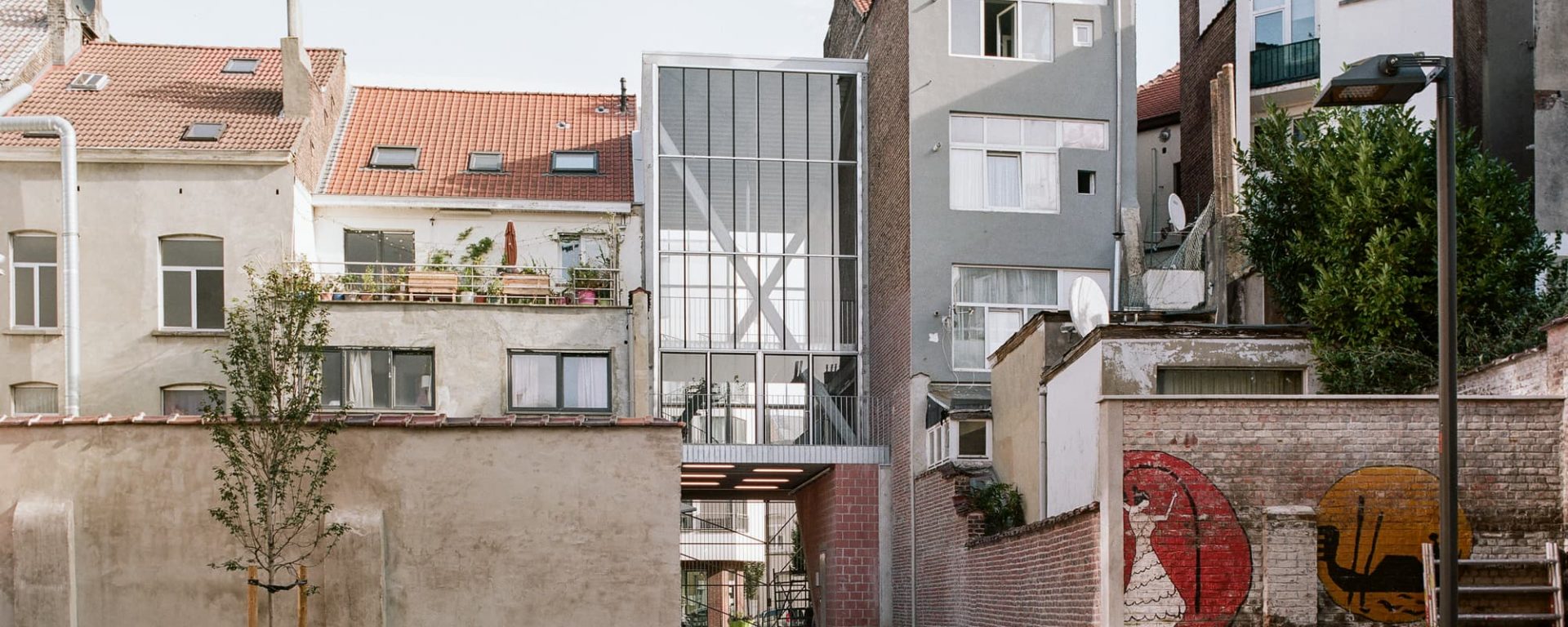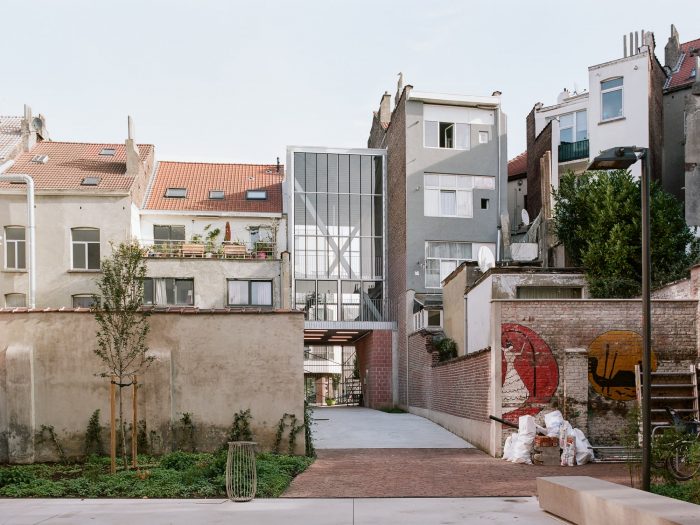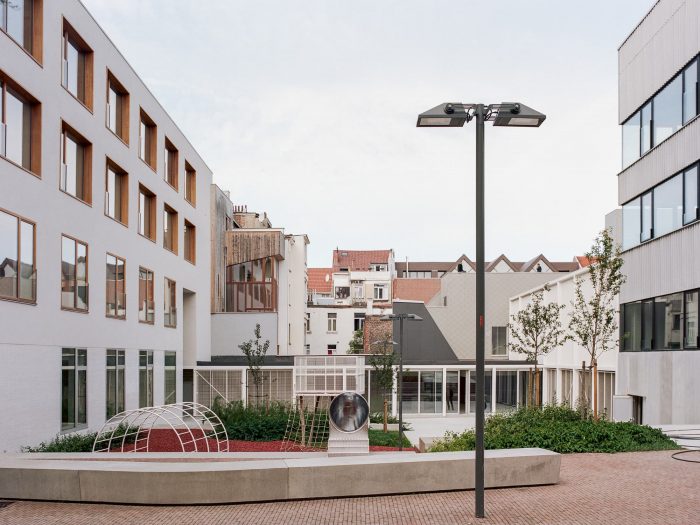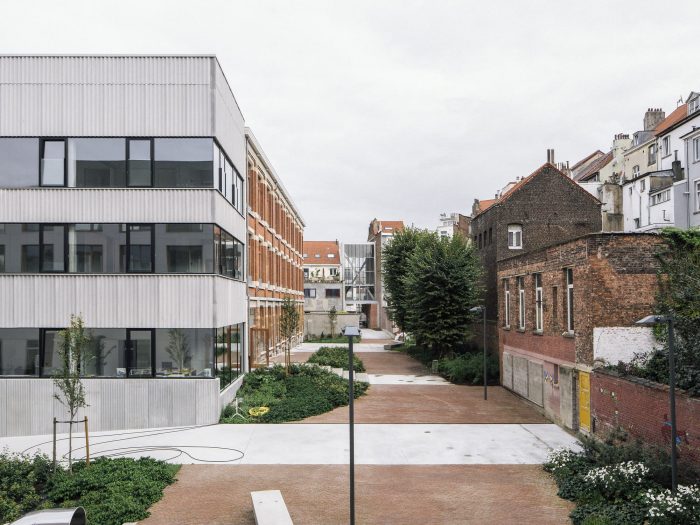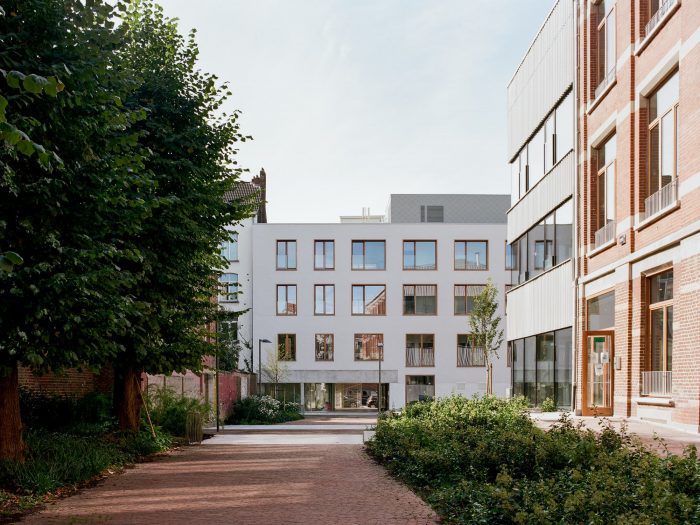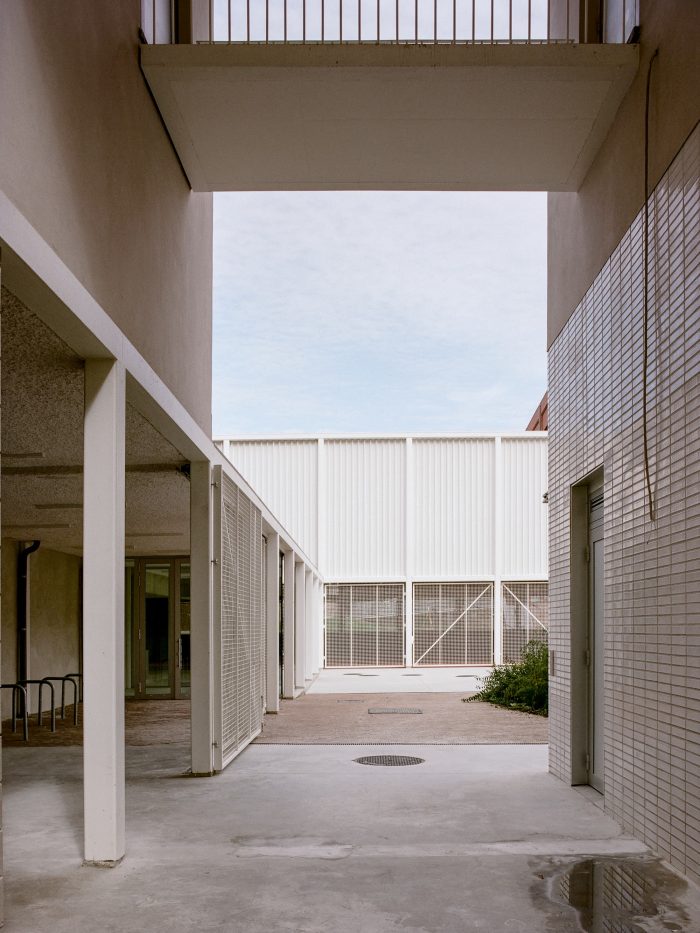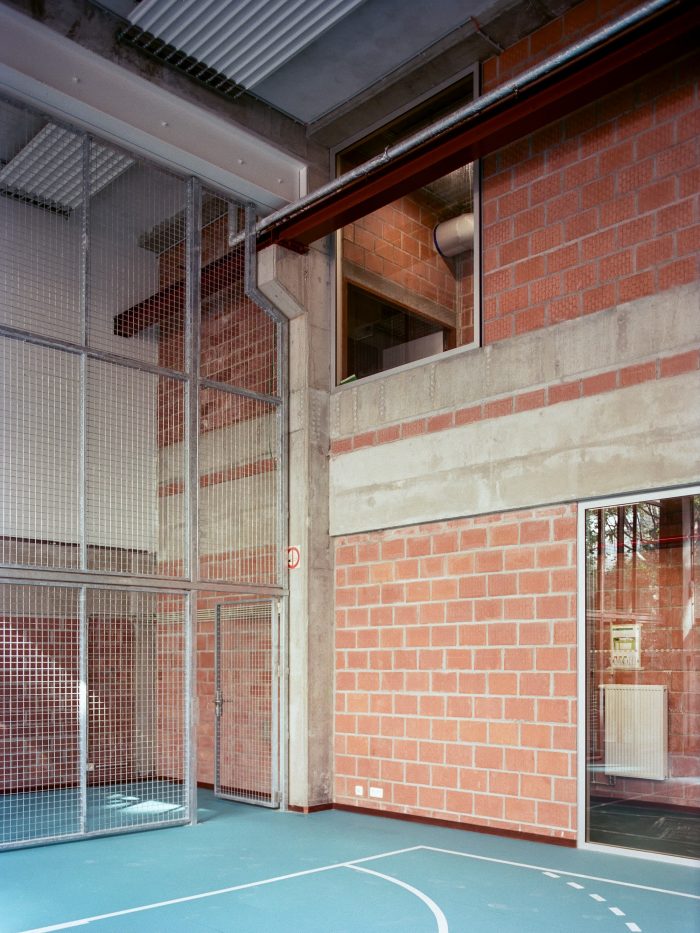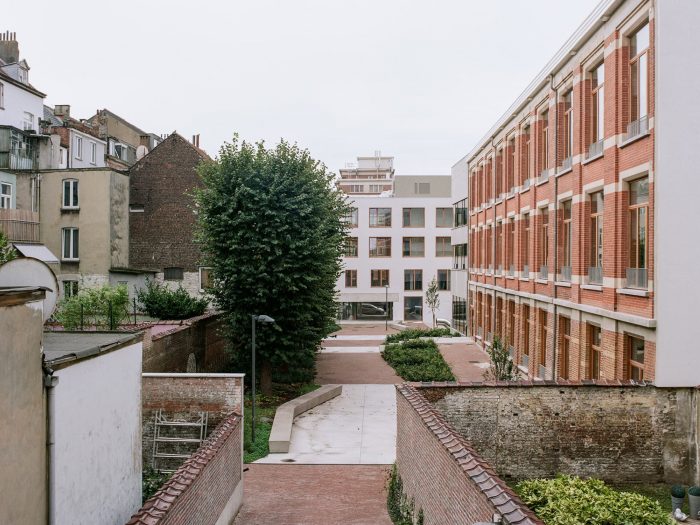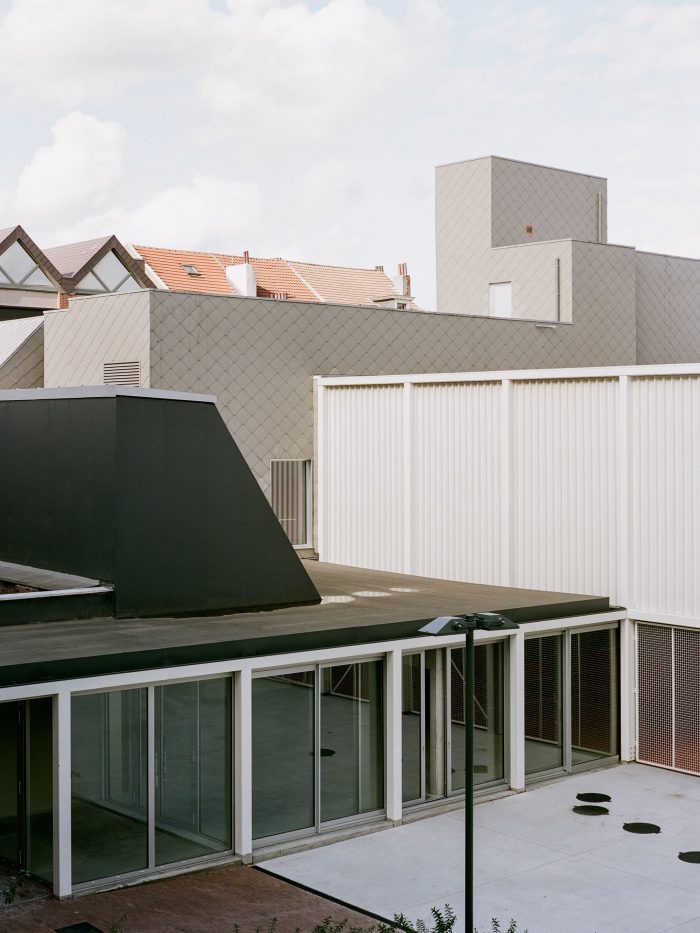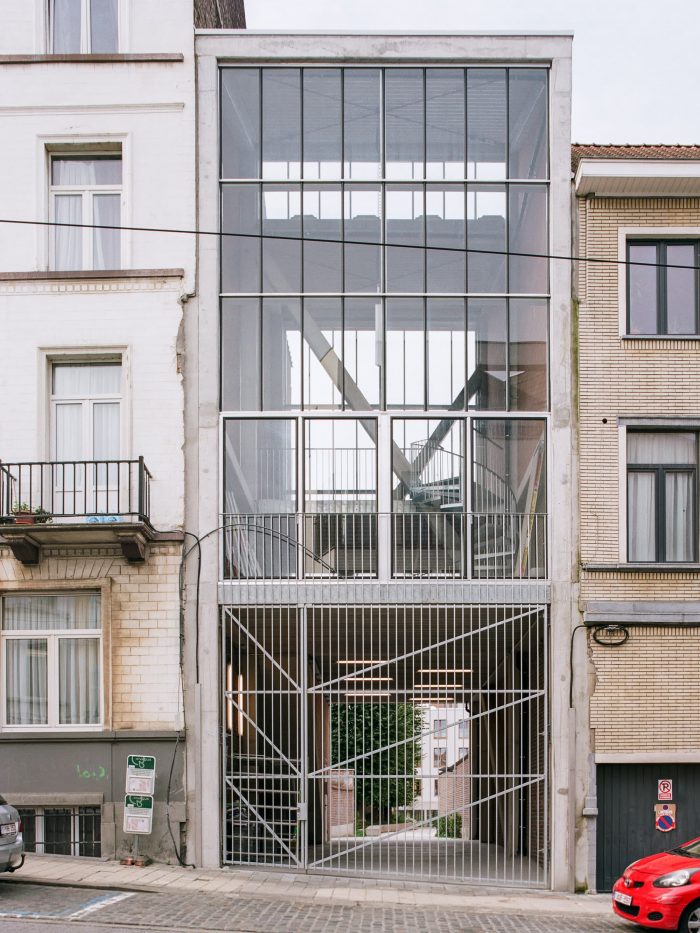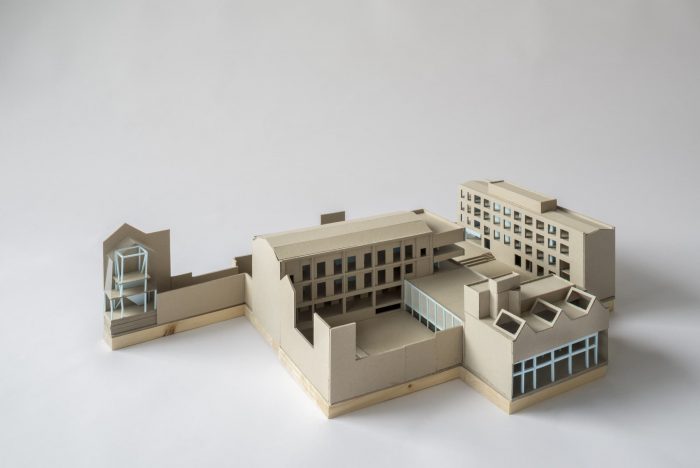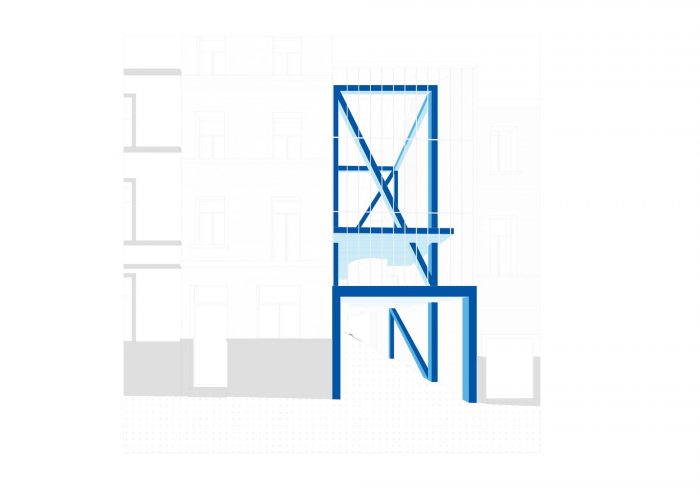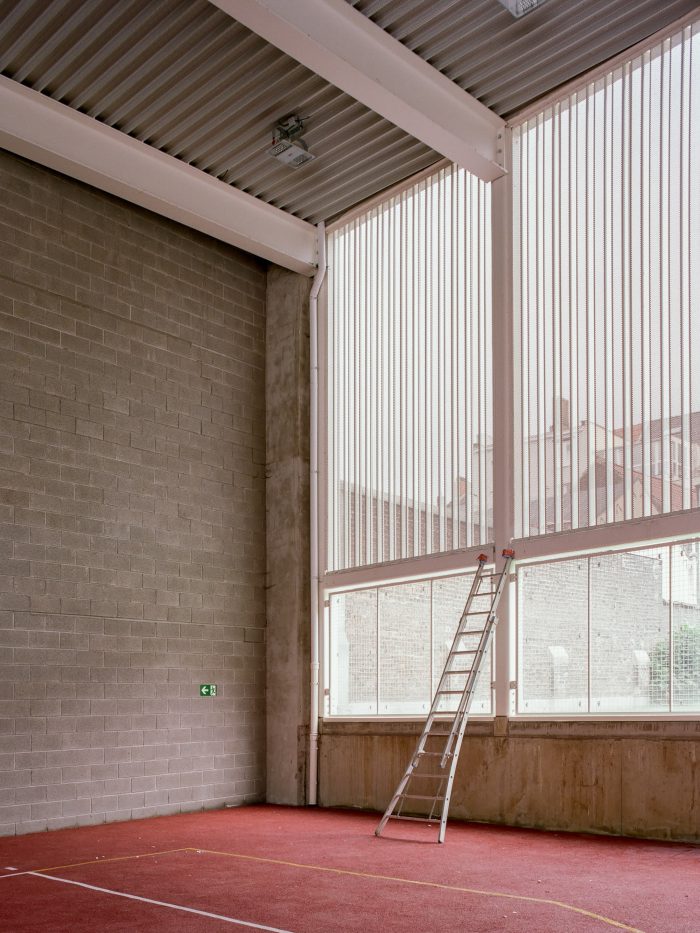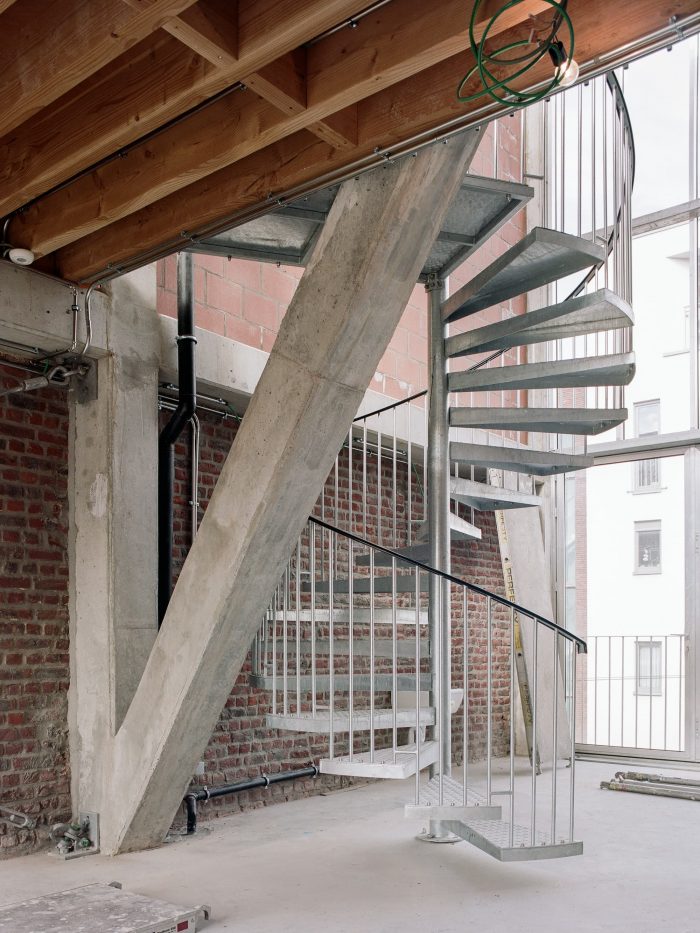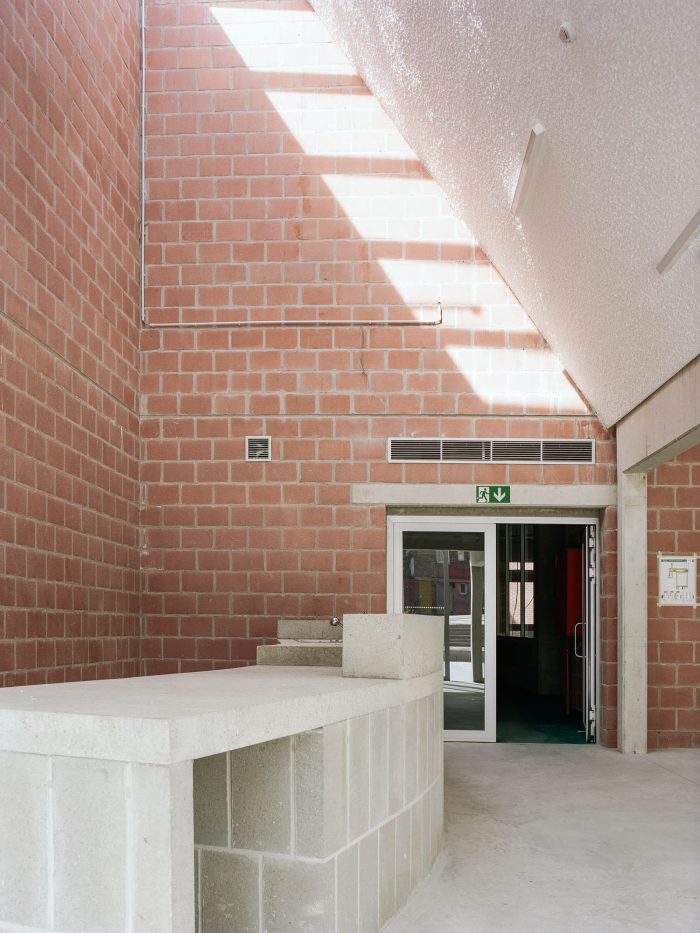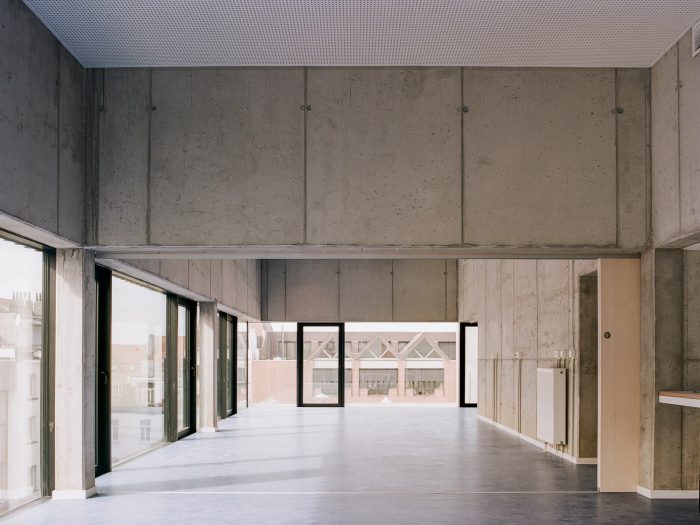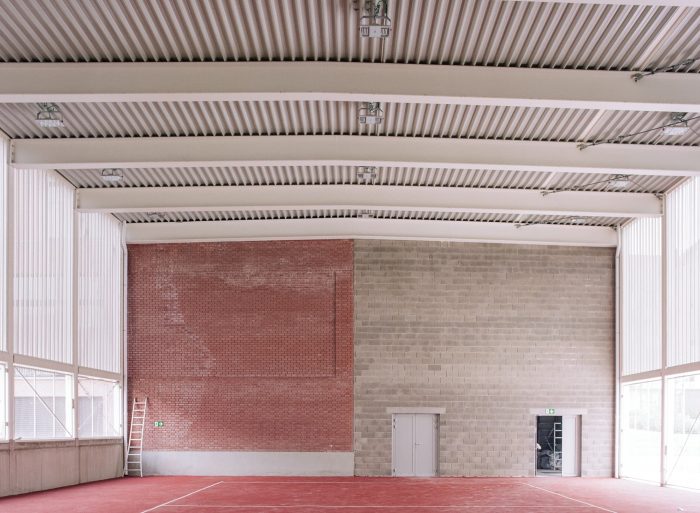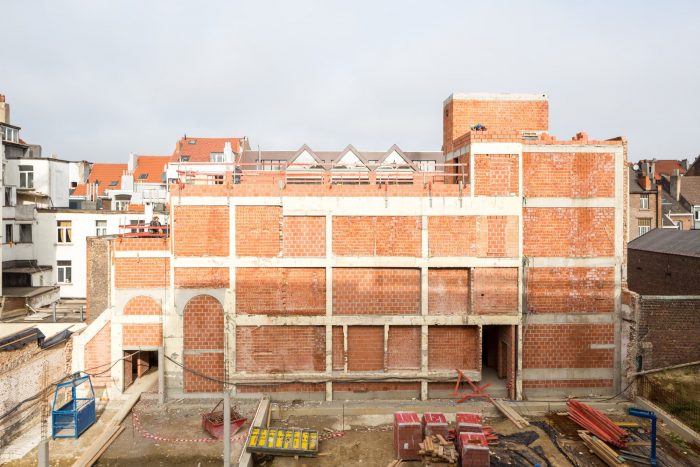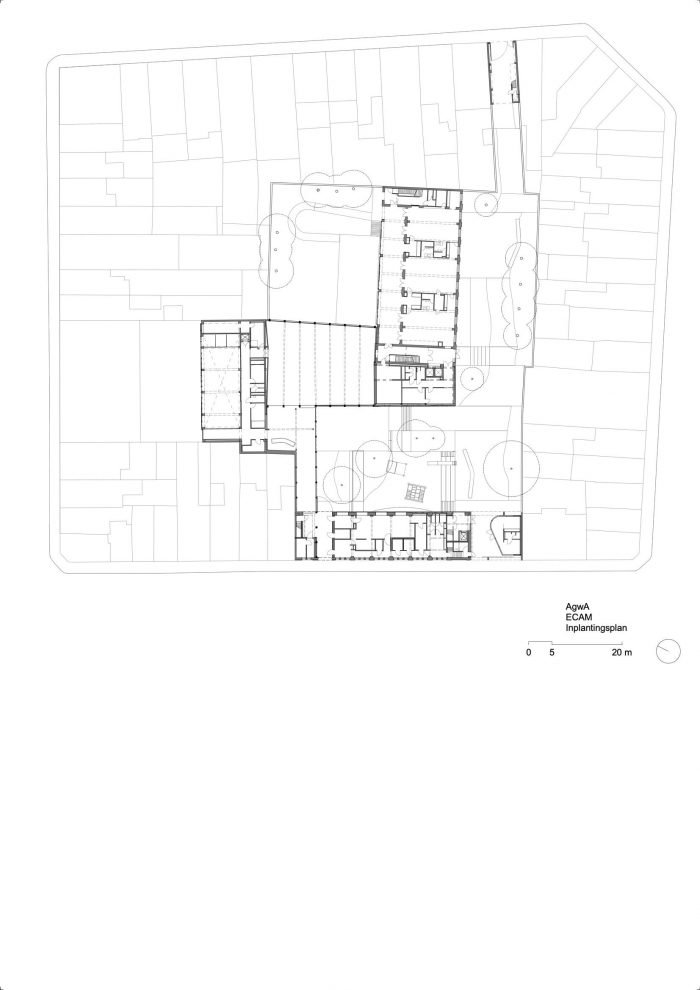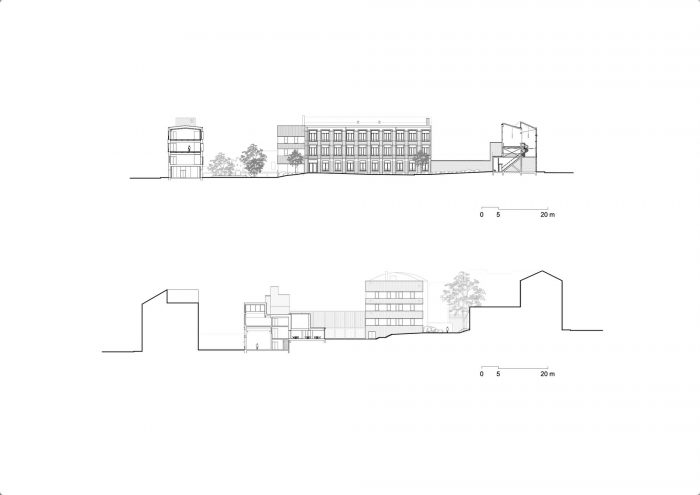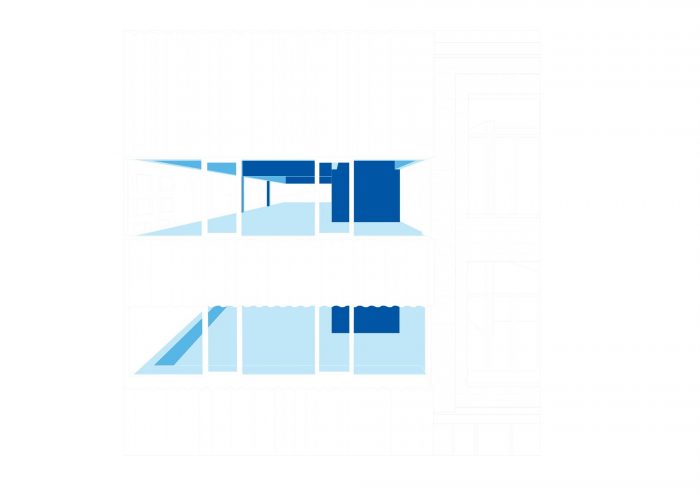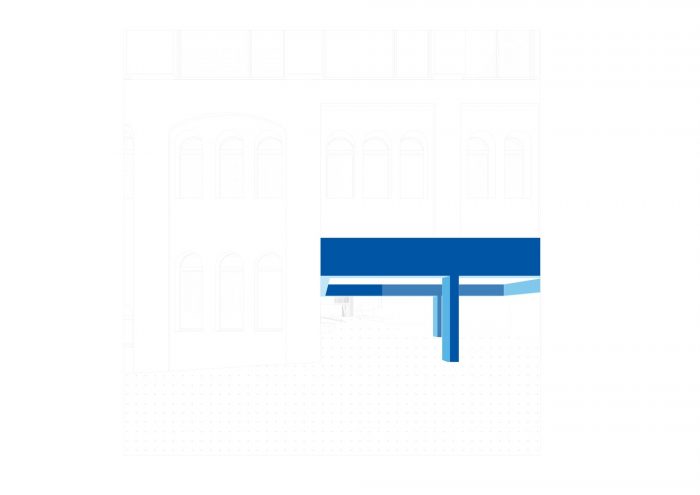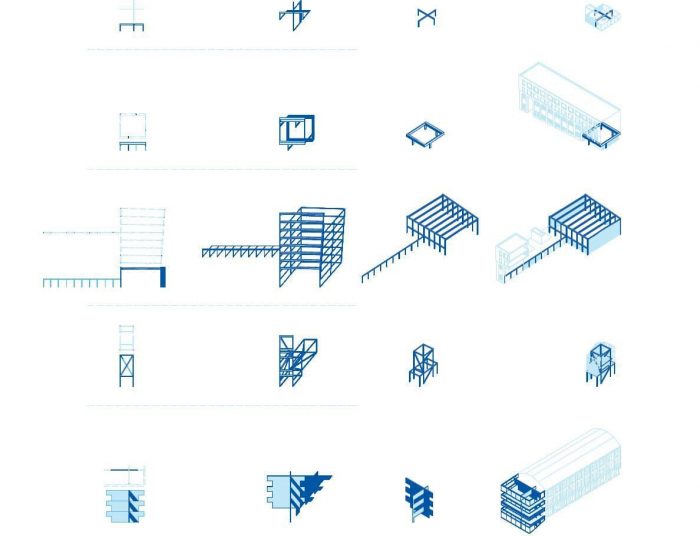在众多协会和组织的参与下,ECAM项目证明了开发一个允许不同行为者对同一地点进行不同使用的拨款结构的重要性。这些组织包括青年、幼儿和体育城市服务机构、Buitenling课外活动协会、学校图书馆和青年中心。
Involving a multitude of associations and organizations, the ECAM project demonstrates the relevance of developing an appropriation structure that allows different uses of the same site by different actors. These include, among others, the youth, early childhood, and sports city services, the buitenling extracurricular association, a scholastic library, and a youth center.
AgwA已经证明了它有能力开发一个项目,能够适应其居住者的多样性,能够在同一空间内提供多样化的项目,能够与项目的所有利益相关者沟通并使其变得更加丰富,无论他们如何变化。布鲁塞尔的住宅区的特点是基于地块的划分。街道的连贯性和房屋的风格一样,都与这种类型学有关。该项目将这一原则延伸到街区内部,使室外空间和建筑空间,无论新旧,都能共存。
AgwA has proven its ability to develop a project capable of adapting to the multiplicity of its occupants, capable of offering a diversified program within the same space, and capable of communicating and being enriched by all the project’s stakeholders, however, varied they may be. The housing blocks of Brussels are characterized by their parcel-based division. The coherence of the streets is as much linked to this typology as to the style of the houses. The project extends this principle to the interior of the block making outdoor spaces and built spaces, new or old, cohabit.
很简单,这个系统创造了城市性:每个元素占据了一个或多个地块,没有叠加的程序。在现有街区的明显连续性中,身份的模式保持简单和可读。就像在一个村庄里,不同的规模自然地共存,创造出通道和相遇的区域,集体空间,和更亲密的空间。
Quite simply, this system creates urbanity: each element occupies one or more plots, without superimposing programs. The pattern of identities remains simple and legible, in the obvious continuity of the existing block. As in a village, the different scales coexist naturally, creating areas of passage and encounters, collective spaces, and more intimate ones.
主要的活动是开放街区,让居民有可能穿过它,享受公园、操场和场地的活动。由于从三条不同的街道进入该场地,层次不同,还有一条景观人行道,这个户外空间成为进入和使用者的调解人。该项目同时具有教育性、文化性和社会性,在不与所处的住宅区脱节的情况下振兴了附近的活动。
The main movement is that of opening the block and giving residents the possibility of crossing it, of enjoying the park, the playground, and the site’s activities. With entrances to the site from three different streets, differences in levels, and a landscaped walkway, this outdoor space becomes a mediator for access and users. The project is at once educational, cultural, and social, revitalizing the activities of the neighborhood without disconnecting from the residential block in which it is inserted.
AgwA对该场地进行了类型学研究。其目的不是要将所有的建筑标准化,而是要通过发挥建筑复杂性的变化来尊重现有的不同美学。这种研究也体现在对不同入口系统的类型学建议中,使进入场地的方式更丰富、更微妙。这种方法产生了一个城市项目,使其更好地融入环境,并更谨慎地回应街区的城市化问题。
AgwA conducted a typological study of the site. The aim was not to standardize all the buildings but rather to respect the different existing aesthetics by playing on a variation of architectural complexities. This same research is expressed in the typological proposals for the different entrance systems, allowing for a richer and more subtle play of access to the site. This approach generates an urban project that is better integrated into its environment and responds more discreetly to the urbanity issues of the block.
对于ECAM来说,可持续的技术选择是根据仲裁和基于长期有趣和有利可图的回报时间的经济逻辑来确定的。第一个挑战是优化现有建筑,并尽量减少新建筑。整个项目中只有1362平方米是新建的,并遵循被动标准。
For ECAM, sustainable technical choices were established according to arbitration and an economic logic based on interesting and profitable return times in the long run. The first challenge was to optimize the existing buildings and minimize new construction. Only 1362m² of the entire project is newly built and follows passive criteria.
可持续性也体现在建筑上,体现在室外空间的最大化,体现在空间结构的可读性,体现在场所的人性化尺度,体现在使用的灵活性,体现在PRM的可及性。该项目的环境质量是一个主要问题:最大限度地减少不透水的表面,创建一个暴雨盆地,植物的多样性,等等。该街区的内部被改造成城市中新的生物多样性保护区。
Sustainability is also reflected in the architecture, in the maximization of outdoor spaces, in the legibility of the spatial structure, in the human scale of the places, in the flexibility of use, and in the accessibility for PRM. The environmental quality of the project is a major issue: minimization of impermeable surfaces, creation of a storm basin, plant diversity, etc. The interior of the block is transformed into a new biodiversity reserve within the city.
Architects: AgwA
Area : 7087 m²
Year : 2023
Photographs :Séverin Malaud, Delphine Mathy
Structure Engineers : JZH&Partners
Energy Performance : Enesta
Landscape Architect : Denis Dujardin
City : Saint-Gilles
Country : Belgium

